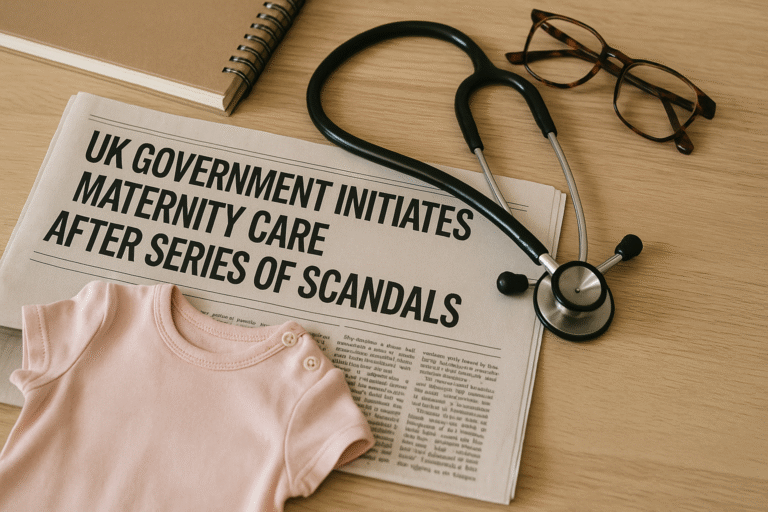Measles, once a common childhood illness, has seen a resurgence in recent years, leading to renewed efforts by healthcare professionals to raise awareness and emphasize the significance of early symptom detection and pre-screening. As a disease that is highly contagious, understanding its early signs and the importance of vaccination can help curb potential outbreaks.
**Understanding Measles and its Impact**
Measles is a virus that primarily affects children but can easily spread to individuals of any age who are unvaccinated. It is transmitted through respiratory droplets from coughing and sneezing, making it one of the most contagious infectious diseases. Before the introduction of the measles vaccine in 1963, major epidemics occurred every 2 to 3 years, leading to an estimated 2.6 million deaths each year globally. Thanks to widespread vaccination programs, those numbers significantly declined, but recent trends have been concerning.
These recent outbreaks have been attributed to several factors, including declines in vaccination rates due to vaccine misinformation and access barriers in certain communities. The global fight against the COVID-19 pandemic has also played a role, as routine immunization programs were disrupted in many regions.
**Early Symptoms to Watch For**
Awareness of the early symptoms of measles is crucial for prompt diagnosis and the prevention of further transmission. About 10 to 14 days after exposure to the virus, the infected person may begin to exhibit symptoms. Initial signs often mimic those of a cold, contributing to potential misdiagnosis. These include:
1. **High Fever:** Often one of the first indicators, a fever can reach exceedingly high temperatures.
2. **Coughing and Sneezing:** The virus initially infects the respiratory tract, causing a cough and runny nose.
3. **Red, Watery Eyes (Conjunctivitis):** Eye inflammation often accompanies early symptoms.
4. **Koplik Spots:** Tiny white spots can form inside the mouth, which are unique to measles.
5. **Rash:** After 3 to 5 days of these symptoms, a rash usually appears, starting on the face and spreading downward.
Understanding these symptoms can lead to earlier identification of the disease, which is crucial not only for treatment but also for preventing the virus from spreading to others, particularly vulnerable groups like infants or immunocompromised individuals who cannot be vaccinated.
**The Role of Pre-Screening and Vaccination**
Pre-screening and vaccination are two fundamental strategies in controlling measles. Vaccination remains the most effective way to prevent measles, offering about 97% protection with two doses. Health professionals stress the importance of vaccination as a tool not just for individual protection but for community immunity.
Routine pre-screening in high-risk areas or during outbreak situations can help identify potential cases before they lead to larger epidemics. Regular check-ups and consultation sessions can encourage individuals to get vaccinated and help catch any signs of measles early. Healthcare providers play a critical role in educating patients and communities about the benefits of vaccination and the risks posed by measles.
**Addressing Vaccine Hesitancy**
Vaccine hesitancy is a growing concern that hampers efforts to maintain sufficient levels of herd immunity. It is often fueled by misinformation and fear. For example, the discredited theory linking the MMR (measles, mumps, and rubella) vaccine to autism has persisted despite numerous studies disproving any connection. Healthcare professionals must work tirelessly to debunk myths by providing evidence-based information and addressing concerns through empathetic communication.
Efforts such as community outreach, educational campaigns, and easily accessible vaccination centers can immensely contribute to increasing vaccine uptake. By understanding the cultural and social factors that lead to vaccine hesitancy, tailored approaches can be developed to engage with and educate hesitant individuals or communities effectively.
**The Importance of Global Collaboration**
Measles is not confined by borders. The mobility of global populations is a significant factor in the resurgence of measles cases. As such, international collaboration is essential. Organizations like the World Health Organization (WHO) and UNICEF have been at the forefront in pushing for global vaccination programs and providing support to countries with high numbers of measles cases.
During the COVID-19 pandemic, these organizations focused on maintaining immunization efforts, understanding that disruptions could lead to outbreaks of other infectious diseases like measles, which could result in a dual threat. Rebuilding and expanding these vaccination programs post-pandemic is a priority to prevent any loss of progress made over the past decades.
**Empowering Individuals and Communities**
Finally, empowering individuals and communities to understand and engage in their health choices can lead to more informed decisions regarding vaccinations. Community leaders and healthcare workers can serve as trusted sources of information and education. Public health messages should be crafted to resonate culturally and linguistically with the communities they aim to reach.
Telehealth services, which became more prominent during the pandemic, can also be leveraged to provide information and facilitate remote consultations, especially in rural or underserved areas. By making healthcare professionals accessible, individuals can seek guidance and reassurance when it comes to measles vaccination.
In conclusion, the fight against measles is multifaceted, requiring early symptom detection, robust vaccination programs, efforts to counter vaccine hesitancy, and global cooperation. Health professionals remain on the front lines, advocating tirelessly for awareness, education, and action. By understanding the vital importance of vaccination, we can collectively safeguard not just our own health, but the health of our communities and future generations.



